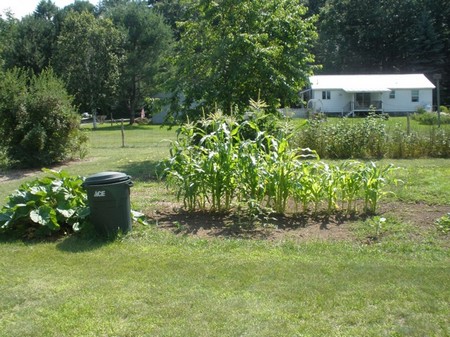Carrying out alterations and improvements takes time and can involve considerable expense. So the most practical approach is to isolate any immediate problems, which obviously cannot wait, and deal with these first.
CHECKING FOR SAFETY
A garden, especially if neglected, can be a hazardous place for the unwary. But a brief inspection should soon reveal most of the pressing problems.
Look at footpaths, drives and other hard-surfaced areas, checking for sinkage and uneven surfaces liable to trip. Pay particular attention to steps and handrails, together with manhole and drain covers. If broken or missing, these obviously present real hazards.

Next, turn your attention to vertical structures like walling and fencing, including retaining walls and gateposts, and check that they are sound and not showing signs of movement. Make hedges and fences a high priority. With the risk of stating the obvious, they need to be made pet and toddler proof if children and pets are likely to frequent the garden. Granted this is not always within the control of the householder, as indeed is the case where restrictions are imposed by open plan housing schemes.
Water in whatever form – be it pool or stream – will attract children, and needs to be made safe. Proprietary grills for pools are one satisfactory solution, and they are quite inconspicuous once plants have grown through. If water features are to be retained, they must be accepted as a calculated risk to children.
Trees too should not escape scrutiny, especially if they are large and close to buildings, power or telephone lines. Danger signals of impending tree troubles include dead or dying branches and split trunks; leaning or undue swaying in high winds; movement at soil level — a gap between tree trunk and soil often spells instability. Any of these signs should be investigated promptly by a tree expert.
Be wary of any unfamiliar plants which carry berries – especially where these are brightly coloured and in an area where children play. On cultivated as well as wild plants, the berries may be poisonous; for example the red berries of yew, daphne, arum and nightshade can all cause a severe stomach upset if consumed by children.
CHECKING FOR NUISANCE
In descending order of priority, spotting and dealing with nuisance is next in ranking to safety. Often these two factors, safety and nuisance, are very closely intertwined. The main objective in the short term is to identify, and where practical eliminate, minor irritations until long term improvements can be carried out.
Overgrown hedges and shrubs which overhang footpaths and neighbours’ gardens are not only a nuisance but are a potential safety hazard. This applies in particular to spiny/thorny plants which can injure eyes, tear clothing and scratch hands and face – and the family car. Pruning back is an immediate job. .
Lawns which are broken up with numerous flower beds take longer to mow and there are more edges to cut. Many view them as a nuisance, resulting in extra work. Should some of these be levelled out and infilled? A wrongly sited tree, shrub or flower border may make it difficult to get in and out of the driveway with a car. Is grubbing out called for?
CHECKING FOR USAGE
Most householders view their garden as an extension of the home, with distinct areas designated for special purposes.
By convention, the front garden of many a house is the shop window of display and the reception area. Are paths and driveways adequate? Is future widening called for?
The majority of gardens have a patio of one sort or another and with an outdoor furniture set, most can quickly be transformed into an outdoor living room used for leisure, entertaining, eating and drinking. Where patios are to be extended, and where there is any choice in the matter, aim to build out on the warmest, sunniest, most sheltered and secluded side of the house. A quick calculation of the likely amount of patio space required is to allow a minimum of 2 sq m (yd) per person at any one time. Furthermore, if you want to connect your garden or patio to your driveway or walkways, you may need the services of an asphalt paving contractor. Moreover, make sure as well not to forget about your garage doors, you may hire an expert garage door repair service for repairs and maintenance.
Have adequate utility areas been earmarked for refuse bins, fuel stores, garden waste, clothes drying and car washing? Or do any of these areas need extending or relocating? In the long term these important but less salubrious essentials are best screened from view, to render them as inconspicuous as possible. Similar considerations apply to space allowed for caravans, boats and any other accessories of outdoor pursuits.
Activity and/or play areas are a ‘must’ in the majority of gardens, perhaps for children or to serve as an overspill from the patio. This is where a hardwearing rear lawn comes into its own. It also provides an excellent setting for other garden features such as an ornamental pool, a rock garden, flower beds and borders, or statuary. Does the lawn need extending?
Finally, there is the vexed question of fruit and vegetable growing to consider. There are not the financial savings to be made of a few years ago, but what price to put on fresh produce — organically grown if preferred? Or indeed how to evaluate such a stimulating hobby? For success, fruit and vegetable areas need to be in sun for much of the day, and are also best screened from view. The enthusiast may want to make provision for a greenhouse or garden frame — they both need a sunny, sheltered spot, for to erect a greenhouse in shade is to restrict the number of crops which can be grown.